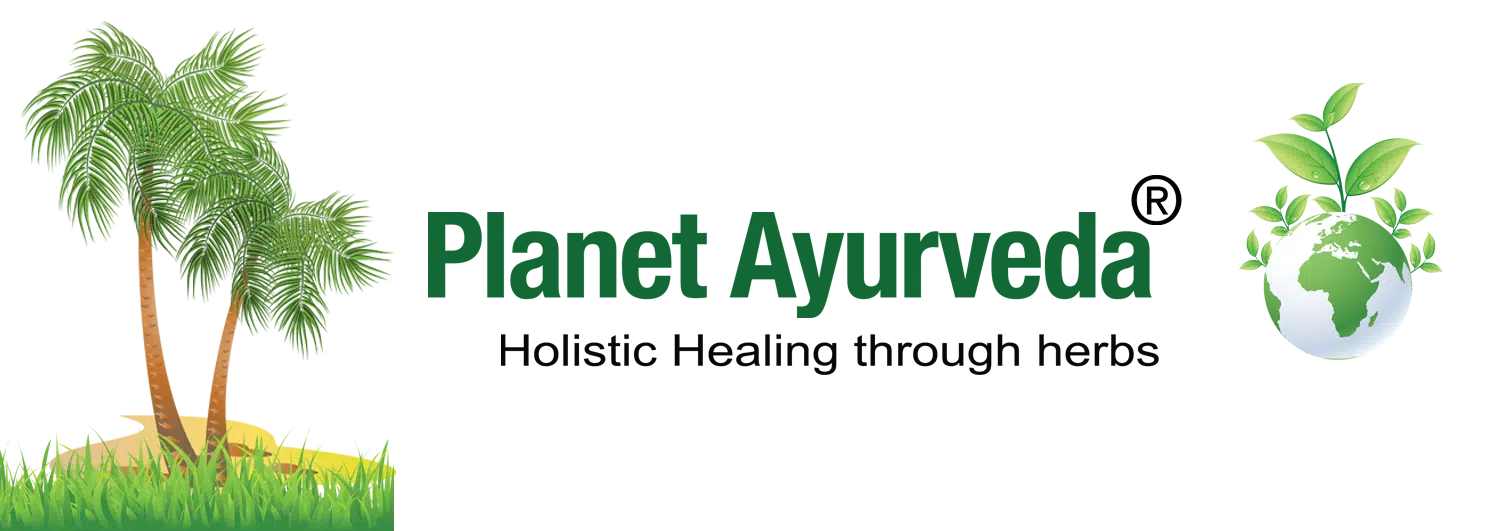Raktadoshantak Ark – Medicinal Properties, Ingredients, Indications, Dosage & More
Reference : Ayurveda Sar Sangrah, Page number – 648
Abstract
Raktadoshantak Ark is a classical Ayurvedic formulation renowned for its powerful blood-purifying and skin-cleansing properties. Derived from a carefully curated blend of detoxifying herbs, this Ark is traditionally used in the treatment of various Rakta (blood) and Twak (skin) disorders. It effectively alleviates conditions like eczema, ringworm, boils, itching, and chronic inflammatory skin diseases by targeting the root cause, vitiated Rakta and Pitta doshas.
Introduction
In Ayurvedic medicine, the concept of Rakta Dosha signifies impurities or vitiation in the blood, often manifesting as skin eruptions, chronic ulcers, or inflammatory disorders. Rakta doshantak Ark, as the name implies, is designed to expel these blood toxins and restore balance to the internal systems. The synergistic effect of its ingredients, all drawn from classical sources, works to pacify Pitta and Rakta vitiation, thereby promoting healthy, radiant skin and enhanced immunity. This ark is particularly effective in managing Chronic and recurrent skin problems rooted in blood impurity.
Ingredients
- Inner bark of Neem (Azadirachta indica)
- Bark of Bakayan (Melia azedarach)
- Bark of Kachnar (Bauhinia variegata)
- Pittpapada (Fumaria officinalis)
- Jawasa (Alhagi maurorum)
- Gorakhmundi (Sphaeranthus indicus)
- Anantmool (Hemidesmus indicus)
- Powder of Red Sandalwood (Pterocarpus santalinus)
- Powder of Shisham wood (Dalbergia sissoo)
- Manjistha (Rubia cordifolia)
- Powder of Khadir stem (Acacia catechu)
- Chopchini (Smilax china)
- Chirayata (Swertia chirata)
- Haritaki (Terminalia chebula)
- Bibhitaki (Terminalia bellirica)
- Amalaki (Emblica officinalis)
Description Of The Ingredient
1. Inner Bark Of Neem (Azadirachta Indica)
It is Tikta-Kashaya (bitter-astringent) in taste and has Rakta Shodhak (blood-purifying) and Krimighna (antimicrobial) properties. It pacifies Pitta and Kapha dosha, making it valuable in treating Rakta Dosha, Charm Vikaar, and Vicharchika. Its active compounds like nimbidin, azadirachtin, and nimbin exhibit strong antibacterial, antifungal, and anti-inflammatory effects. These help in reducing skin inflammation, controlling Dadru (fungal infections), relieving Khujli (itching), and purifying vitiated blood responsible for Visarpa (erysipelas) and Vatarakta (gout-related eruptions).
2. Bark Of Bakayan (Melia Azedarach)
This herb is also known for its Tikta-Katu rasa (bitter-pungent taste), is a potent Krumighna and Raktashodhak herb. It acts on Pitta-Kapha dosha, relieving eczema (Vicharchika), itching (Khujli), and Visarpa due to its strong detoxifying and antifungal properties. The alkaloids like meliatoxin, azedarachin, and tetranortriterpenoids exhibit antimicrobial and anthelmintic effects, making it highly effective in Dadru and Rakta Dushti conditions. It helps cleanse the skin and purify the blood, thereby controlling recurrent skin eruptions and lesions.
3. Bark Of Kachnar (Bauhinia Variegata)
This herb possesses Kashaya rasa (astringent) and exhibits Lekhana (scraping), Shothahara (anti-inflammatory), and Raktaprasadak (blood-cleansing) properties. It balances all three doshas, especially Kapha-Pitta, making it ideal for treating Vicharchika, Dadru, and Visarpa. Active constituents like bauhiniastatins, flavonoids, and tannins help in tissue regeneration, reducing glandular swellings, and healing chronic skin ulcers. It is especially beneficial in Vatarakta, as it detoxifies Rakta Dhatu and reduces inflammation and pain.
4. Pittpapada (Fumaria officinalis)
It is a classical herb for Rakta Pitta vikaras due to its Tikta-Kashaya rasa, Pitta-Kapha shamak effect, and excellent Rakta-Pitta shodhana (blood and pitta purification). The key alkaloid fumarine along with fumaric acid provides hepatoprotective, anti-inflammatory, and anti-pruritic properties. It soothes inflamed skin in Vicharchika, clears toxins from Rakta in Visarpa, and reduces itching in Khujli and Dadru. It also supports the management of Vatarakta by eliminating Pitta-induced vitiation in blood channels.
5. Jawasa (Alhagi maurorum)
This herb has Katu-Tikta rasa and is known for its Raktashodhak, Mutrala (diuretic), and Shothahara actions. It balances Pitta and helps expel morbid doshas from the blood. It is used in chronic skin disorders such as Vicharchika, Dadru, and Charm Vikaar due to its blood-purifying action. The active compounds including flavonoids, tannins, and alkaloids provide anti-inflammatory and antioxidant effects. In Vatarakta, it reduces swelling and uric acid accumulation by improving metabolic waste excretion and Rakta detoxification.
6. Gorakhmundi (Sphaeranthus indicus)
It is Tikta-Katu in rasa, Laghu-Ruksha in guna, and pacifies Kapha-Pitta dosha. It is a renowned Raktashodhak and Kusthaghna (anti-dermatosis) herb. Its active compounds such as eudesmanoids, sesquiterpene lactones, and flavonoids exert anti-inflammatory, antibacterial, and antipruritic effects. These make it highly effective in managing Vicharchika, Dadru, and Khujli by reducing inflammation and microbial growth. It cleanses the blood and corrects vitiated Rakta Dhatu, making it beneficial in Rakta Dosha, Visarpa, and inflammatory conditions like Vatarakta.
7. Anantmool (Hemidesmus indicus)
It has Madhura-Tikta rasa and Snigdha-Guru guna, making it Tridosha shamak, especially beneficial for Pitta-Rakta shodhana. It is known for Twachya (skin-nourishing), Dahaprashamana (burning sensation relieving), and Rasayana (rejuvenative) properties. The active constituents like hemidine, saponins, and essential oils provide detoxifying and cooling action, especially in Vicharchika, Visarpa, and Khujli. It soothes the skin, purifies blood, and helps relieve chronic eczema and gout-related skin lesions (Vatarakta).
8. Powder of Red Sandalwood (Pterocarpus santalinus)
This herb is Tikta-Kashaya rasa, Sheetala veerya, and Pitta-Kapha shamaka in nature. It is extensively used in Rakta Pitta, Twak Vikara, and Visarpa. Its bioactives, like santalin A & B, pterostilbene, and flavonoids, contribute to its anti-inflammatory, cooling, and antiseptic effects. It is effective in soothing itching (Khujli), managing ringworm (Dadru), and eczema (Vicharchika). It helps reduce the burning sensation and inflammation in Vatarakta and purifies blood vitiated with Pitta-Rakta dushti.
9. Powder of Shisham Wood (Dalbergia sissoo)
This herb, known for its Katu-Tikta-Kashaya rasa, has Raktaprasadak, Kandughna (anti-itch), and Shothahara actions. Its active principles, like biochanin A, dalbergin, and isoflavonoids, exert potent anti-inflammatory, analgesic, and antimicrobial effects. It is useful in Rakta Vikriti, especially in Visarpa, Khujli, Dadru, and eczema, due to its scraping and blood-purifying qualities. In Vatarakta, it helps reduce swelling and local hyperemia by acting on inflamed joints and tissues.
10. Manjishtha (Rubia cordifolia)
It is considered the most potent Raktashodhak herb in Ayurveda. It has Tikta-Kashaya rasa, Ushna veerya, and pacifies Kapha-Pitta dosha. Its alkaloids, such as rubiadin, purpurin, and manjistin, exhibit strong anti-inflammatory, antioxidant, and antibacterial actions. It cleanses Rakta Dhatu, reduces skin discolorations, and improves lymphatic drainage. It is beneficial in all Charm Vikaar, especially Visarpa, Vicharchika, Dadru, and Khujli, and plays a vital role in Vatarakta by detoxifying blood and reducing joint inflammation and pain.
11. Powder of Khadir Stem (Acacia catechu)
It is a prime Rakta Shodhak and Kusthaghna drug, possessing Kashaya rasa, Ruksha guna, and Sheeta virya, which help pacify Pitta and Kapha doshas. It is extensively indicated in Charm Vikaar, Vicharchika, and Dadru due to its Lekhana, Shothahara, and Krimighna properties. Active compounds like catechin, epicatechin, and tannins provide powerful antiseptic, astringent, and anti-inflammatory action. These help in controlling Rakta Dushti, soothing itching (Khujli), and clearing pus-filled skin lesions in Visarpa and Vatarakta.
12. Chopchini (Smilax china)
This herb is renowned for its Rasayana, Kandughna, and Raktashodhak effects. It has Tikta-Kashaya rasa, Laghu-Ruksha guna, and pacifies Kapha-Vata doshas, making it highly effective in Vatarakta (gout), where it removes Aam and improves circulation. Rich in saponins, flavonoids, and resins, it has anti-inflammatory, detoxifying, and antirheumatic effects. It purifies Rakta, reduces joint pain and skin eruptions, and provides relief in chronic skin diseases such as Vicharchika, Dadru, and Visarpa.
13. Chirayata (Swertia chirata)
This herb has Tikta-Kashaya rasa and Laghu-Ruksha guna, and it is an excellent Pitta-Kapha shamak, especially helpful in Rakta Dosha, Vicharchika, and Charm Vikaar. The active constituents such as swertiamarin, amarogentin, and mangiferin are known for their antibacterial, anti-inflammatory, and hepatoprotective effects. Chirayata supports liver detoxification and blood purification, making it useful in chronic skin allergies, eczema, Khujli, and infections like Dadru and Visarpa. It also helps regulate metabolism in Vatarakta.
14. Haritaki (Terminalia chebula)
It is Tridosha shamak, with emphasis on Vata-Pitta pacification. It has Rasa pradhan property (all tastes except salt), Laghu-Ruksha guna, and Ushna virya. It is Raktaprasadak, Kusthaghna, and Shodhana in nature. The key compounds like chebulagic acid, chebulinic acid, and gallic acid provide antioxidant, antibacterial, and detoxifying actions. Haritaki cleanses the digestive tract and Rakta dhatu, alleviates Vicharchika, Khujli, Dadru, and controls inflammatory flare-ups in Visarpa and Vatarakta.
15. Bibhitaki (Terminalia bellirica)
This herb has Kashaya rasa, Ruksha guna, and balances Kapha-Pitta dosha. It is known for its Lekhana, Shothahara, and Raktashodhak properties. The presence of beta-sitosterol, gallic acid, and ellagic acid contributes to its antifungal, anti-inflammatory, and antimicrobial effects. It is used in Charm Vikaar, Vicharchika, and Dadru for reducing thickened lesions and itching. In Vatarakta, it helps reduce swelling and toxic accumulation, supporting healthy blood and joint function.
16. Amalaki (Emblica officinalis)
It is Madhura-Amla rasa, Sheeta virya, and pacifies Pitta and Vata. It is a superior Rasayana, Raktashodhak, and Twachya herb. It is rich in vitamin C, tannins, and emblicanin A & B, which show antioxidant, anti-aging, and anti-inflammatory properties. It rejuvenates the skin, clears Rakta Dushti, and aids in healing chronic skin conditions like Vicharchika, Khujli, and Dadru. It reduces burning and redness in Visarpa and prevents tissue damage in Vatarakta by strengthening blood vessels and cooling the system.
Method Of Preparation
- Take 1 part of each herb, coarsely crush it, and soak it in warm water in the evening. Cover it and let it sit overnight.
- In the morning, place it in a Nadika Yantra (traditional distillation apparatus) and distill the mixture properly to collect approximately 20 bottles of Ark (distilled extract).
Medicinal Properties
- Helps purify the blood and balance excess Pitta, addressing the root cause of skin and blood disorders.
- Reduces itching, swelling, and fungal infections like ringworm, eczema, and dermatitis.
- Supports healing of damaged skin, clears chronic eruptions, and aids in systemic detox from deep-seated infections.
Indications
- Rakta Dosha (Blood disorders)
- Charm vikaar (Skin disorders)
- Khujli (Itching)
- Vicharchika (Eczema)
- Dadru (Ringworm)
- Visarp (Erysipelas)
- Vatarakta (Gout)
Dosage
- 6 tola (69.98 grams)
Contraindication
- This herbal formulation does not have any side effects.
- Pregnant women, breastfeeding women, and children below 5 years should consult a healthcare provider before using this herbal formulation.
Conclusion
Raktadoshantak Ark is a time-tested Ayurvedic distillate designed to purify the blood and treat chronic and acute skin disorders. Its multifaceted ingredients help eliminate deep-rooted toxins, promote healthy skin, and improve complexion. Regular use under guidance results in enhanced skin radiance, detoxification, and overall systemic balance.



